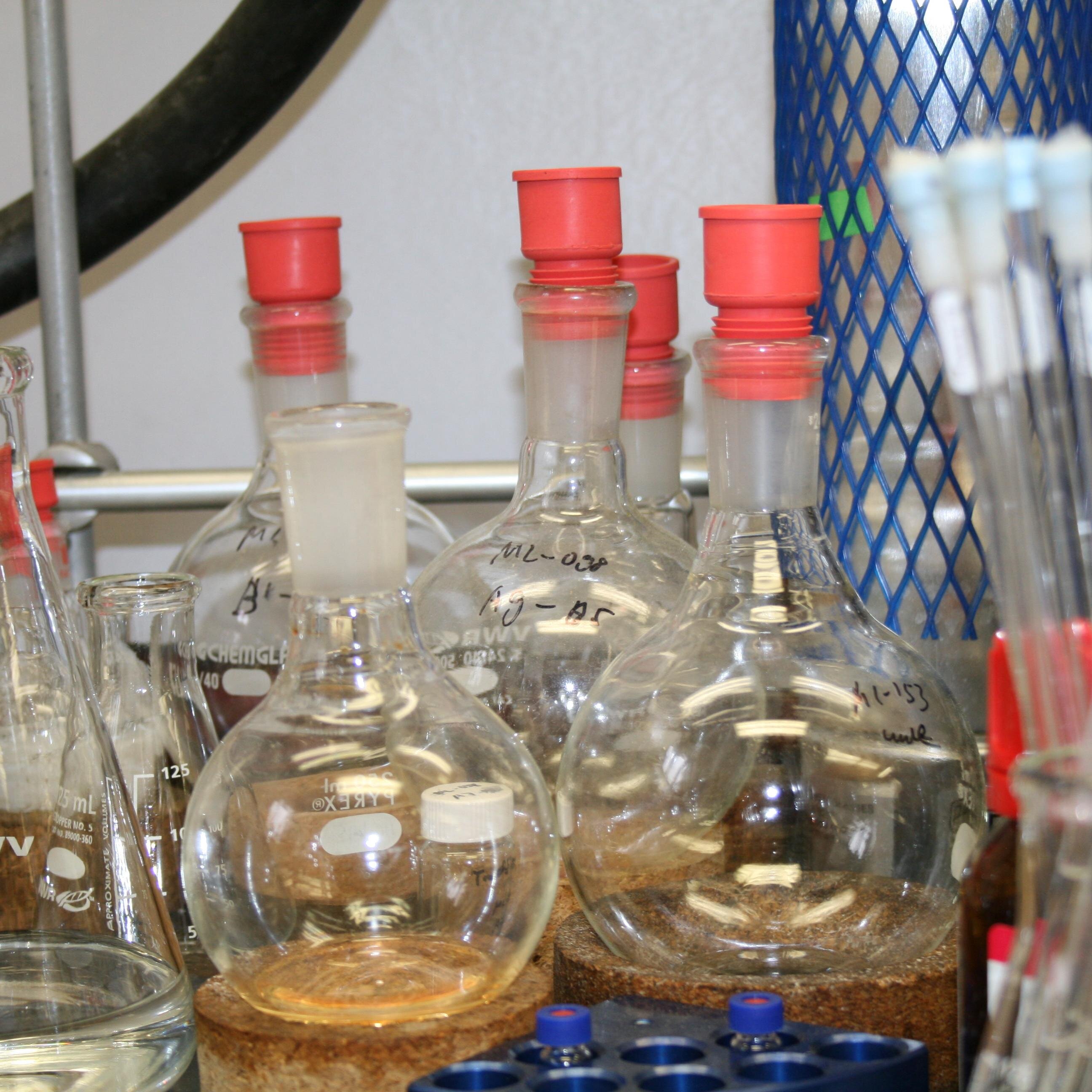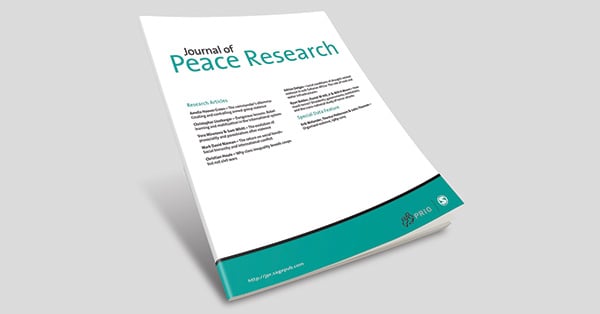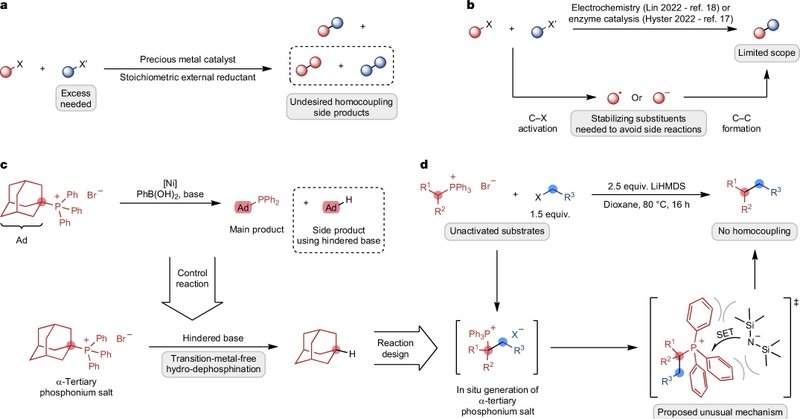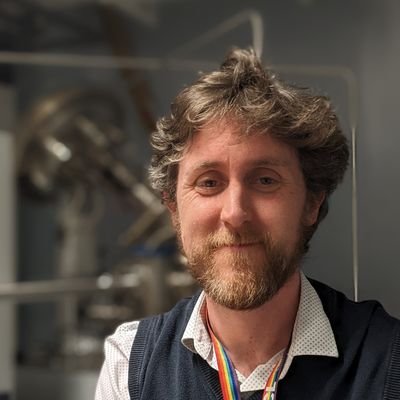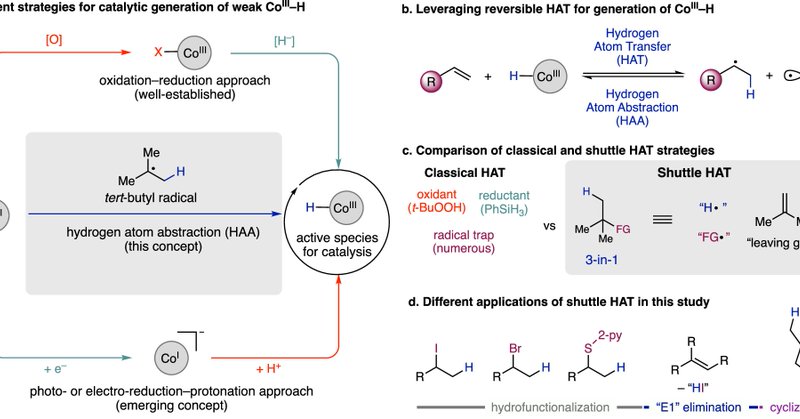
Michael Bogdos
@BogdosMichael
Followers
285
Following
4K
Media
49
Statuses
884
PhD student in synthetic chemistry working in the Morandi group at the ETH Zürich.
Zürich, Switzerland
Joined February 2019
Great to see this published in @NatureSynthesis! https://t.co/FEbEq8gPtz (or https://t.co/bufvDPZeaI ) Now that it's peer reviewed, I am comfortable talking about it and doing a tweetorial (to come). First, let me tell you about the reaction lost to time... 1/
4
18
97
Congrats to Emilien, Maurus and Giorgia! Metal- and CO-Free Carbonylation of Alkyl Iodides @J_A_C_S. https://t.co/Q8DBosj4Wb
3
9
167
If we managed to map the causal structure aka "the data generating process", we are on track to refine the models. I believe what we presented is approaching that; imprecisions remain e.g. treating CN as exposure and not modeling S -> CN. Hopefully these are eventually resolved.
0
0
0
As one of my favourite papers puts it: As a consequence, linear regression results are notoriously unstable – even minor changes in model specification can lead to coefficient estimates that bounce around like a box full of gerbils on methamphetamines. https://t.co/7DgsHSP9hq 6/
journals.sagepub.com
A combination of technological change, methodological drift and a certain degree of intellectual sloth, particularly with respect to philosophy of science, has ...
1
0
0
The biggest takeaway from the paper is not the predictive model, but rather the model structure. The coefficients may change if e.g. we find better descriptors. Even if the model is "retrained" in the lingo of data-driven models, the causal structure remains. 5/
1
0
0
Prior to now, there was no answer to the question "what affects RE most, ligand sterics, electronics, or coordination number?". Our analysis indicates that electronics is dominant, particularly when CN is lowered. 4/
1
0
1
Instead, we propose that CN affects electronics; for CN (2n - 1) fewer donating ligands surround the metal compared to CN (2n), making it more e-poor accelerating RE. The relevant relationships for variation only in the ancillary ligand(s) are captured in a DAG: 3/
1
0
0
Contrary to textbooks, our data don't support an effect of CN on rate, once we condition for metal electronics. i.e. if we ensure that the metal complexes we compare are equally electron-poor, they eliminate at the same rate, even if one is square-planar and one is T-shaped. 2/
1
0
1
Great to see this published! In short, we introduced causal inference logic to test which of metal electronics, ancillary ligand sterics and metal coordination number (CN) directly affect the rate of reductive elimination at Pd(II) (and presumably other metals...) 1/
Many Congrats to @BogdosMichael, @sevenroediger, @FRuepp, Nathalie, @Mue11erPatrick, @FabioMasero and Jan on this epic study of C-N reductive elimination in @J_A_C_S - using causal inference, organometallics, electrochemistry, kinetics and DFT. https://https://t.co/zLvng8gp1N
1
3
13
#ProcterPOW: @morandilab present a TM-free approach to cross-E+ coupling 🔀 after coupling of alkyl P+ salts and alkyl iodides using bis(TMS)amide, C-P is cleaved by SET in a frustrated ion pair between alkyl P+ salts and (bisTMS)amide, with HAT from the leaving PPh3. 🔗👇
2
8
68
I am very happy that our study was published in Nature! Please check it out! Thanks a lot to my co-authors @emilien_ls and Philip and my PhD supervisor @morandilab!
Many Congrats to @sevenroediger, Emilien Le Saux and Philip Böhm for uncovering a new mechanistic approach to alkyl-alkyl coupling using frustrated ion pairs. Now @Nature @ETH_DCHAB @ETH_en. https://t.co/ROub7mu3pt
1
6
46
Many Congrats to @sevenroediger, Emilien Le Saux and Philip Böhm for uncovering a new mechanistic approach to alkyl-alkyl coupling using frustrated ion pairs. Now @Nature @ETH_DCHAB @ETH_en. https://t.co/ROub7mu3pt
nature.com
Nature - A transition-metal-free platform enables the formation of challenging C(sp3)–C(sp3) bonds in organic compounds via single-electron transfer, facilitating the coupling of...
2
35
279
10 Great Books on Trade and Globalisation (seems relevant) 1)The Globalisation Paradox- @rodrikdani Great work on the nuances of globalisation. Recognizing its wide benefits, but also how tradeoffs: national self-determination, democracy and economic hyper globalisation conflict.
4
173
711
A new paper about AI in Materials Discovery has gained a lot of attention - it reports a big increase in productivity of scientists using AI tools, and interesting secondary effects of using AI for science. But do the technical claims stack up? Let's see...
19
125
929
And that overall is my problem again here. There is lots on how AI was integrated into the process, but much less on verifying that AI gave results that were actually useful.
1
5
95
🔥 We have two open full prof positions at our institute (LOC) at @ETH_DCHAB @ETH_en 1. Synthetic Organic Chemistry 2. (Bio)Analytical Chemistry Apply until Nov 15 and be our colleague! https://t.co/Nv9gV91KVm
Come be our colleague 👇. Two positions (synthetic organic and (bio)analytical) open at our institute (LOC). Amazing students and staff, colleagues, facilities, location, and long-term funding perspectives. What are you waiting for? Apply today 😀. @ETH_DCHAB #chemjobs
0
20
44
Come be our colleague 👇. Two positions (synthetic organic and (bio)analytical) open at our institute (LOC). Amazing students and staff, colleagues, facilities, location, and long-term funding perspectives. What are you waiting for? Apply today 😀. @ETH_DCHAB #chemjobs
Job Offer: two open positions @ETH_DCHAB Starting date: immediately or upon mutual agreement More info: https://t.co/yjtWML6DZI
#scs #ETH #job #organic #analytical #chemistry #professor #Switzerland
1
30
103
My first paper from the Morandi group. Shuttle catalysis greatly simplifies Co–H formation for MHAT reactivity – now all you need is a C–H bond. The final version is now available
nature.com
Nature Communications - Hydrogen atom transfer (HAT) from a metal-hydride is a reliable and powerful method for functionalizing unsaturated C–C bonds in organic synthesis. Herein, the authors...
4
17
122
Congrats to @sevenroediger, Adriana Neves Vieira, Cosima Brudy, Mischa Trabesinger and Jan Hübscher - Olefination of Activated Alkyl Halides with Phosphonium Salts. @thiemechemistry in honor of @CarreiraGroup. https://t.co/f0Ivssgg8H
0
14
126
Congrats to Tanner @W0TangClan, Philip Blank, Andrea Brugnetti, Philip Boehm and Françoise Aouane - introducing the concept of shuttle HAT for mild catalytic transfer hydrohalogenation of alkenes. @NatureComms. Previously on @ChemRxiv. https://t.co/xilZ7etEQG
0
13
141
Last week we got the news that our Spark project has been funded by the @snsf_ch 😃🥳 I am looking therefore for a Postdoctoral Researcher to work with me to develop new biorenewable fuels, using organometallic chemistry and designing new catalysts! #NewPI #chempostdoc
3
56
197

